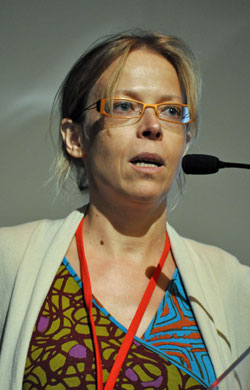Experience in surgical practice using Savene (dexrazoxane) to treat anthracycline extravasations
9 October 2011
F. Duvivier CHPLT, Verviers, Belgique
Extravasations (EV) of anthracyclines (AC) are a rare but potentially seriously debilitating complication of chemotherapies (CT) that can lead to severe skin lesions with the need for surgical debridement, a functional disability in the short and longer term, and a delay in the CT programme following on from EV management.
Savene is the only antidote authorised for the treatment of AC EVs. The treatment involves a peripheral intravenous infusion lasting 1 to 2 hours, to be started as soon as possible and within 6 hours following the EV, to be repeated 24 hours and 48 hours after the 1st infusion. The treatment’s effectiveness was first demonstrated during clinical testing on peripheral EVs, confirmed by biopsy, with a rate of 98% of being able to dispense with the need for surgery due to ulceration or tissue necrosis, and the initial CT programme being maintained in 71% of patients. These efficacy data were recently confirmed in Belgium, in clinical practice, with 41 patients showing an AC EV, the majority of whom (28/41) were on central venous catheter (CVC). The reported efficacy level (i.e. absence of ulceration or necrosis justifying surgery) was similar (95%) to that reported in the studies, and the same applied with maintaining the CT programme (with 73% of patients). Eight undesirable effects were reported with 4 (9.8%) patients (including thrombopenia, neutropenia and nausea), in most cases reversible. One local fibrosis persisted in 2 patients, not directly related to tissue necrosis. One patient reported a fleeting pain in the arm.
Other clinical cases also confirm the favourable profile of Savene’s effectiveness/tolerance in adults in treating AC EVs, whether peripheral or on CVC, as long as Savene is initiated rapidly, the cooling procedures halted early enough and the specific Savene diluent used in order to minimise reactions at the point of injection.